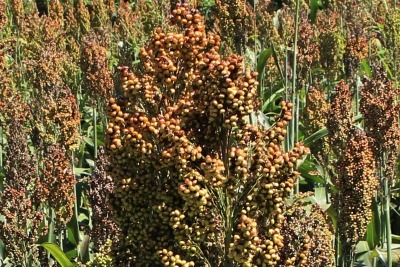Cereal crops are interchangeably called grain crops.
In many publications and correspondence, they are simply called grains or cereals.
As of 2012, the top 5 cereals in the world ranked on the basis of production tonnage are maize (corn), rice (paddy), wheat, barley, and sorghum.
These crops are also among the top 50 agricultural commodities in the world with maize ranking second next to sugarcane.
Rice (paddy) ranks third, wheat – 4th, barley – 12th, and sorghum – 30th. Another cereal, millet, ranks no. 42 (FAOStat 2014, updated Aug. 18, 2014).
According to Chapman and Carter (1976), “a cereal is generally defined as a grass grown for its small, edible seed.”
They also explained that all cereals are angiosperms, monocots, and members of the grass family Gramineae.
Similarly, Lantican (2001) defines cereal or grain crops as agronomic crops belonging to the grass family Gramineae which are utilized as staples; the word “cereal” is derived from the most important grain deity, the Roman Goddess Ceres.

Botanically, however, the seed and the grain are not exactly the same despite their interchangeable use.
In rice, the grain consists of brown rice and the enveloping rice hull.
The brown rice is the plant’s true fruit (a type of fruit called a caryopsis) and consists of a seed and the surrounding fruit wall.
The fruit wall (pericarp) consists of several thin layers of tissues that are fused together and inseparable from the seed coat.
In indica rice, the hull consists of the lemma, palea, sterile lemmas, and rachilla.
The grain, or kernel, of corn (maize), is likewise a caryopsis.
Cereal crops are necessarily grasses, a composite term that refers to monocot plants under the family Poaceae or Gramineae.
They are grown primarily for the harvesting of mature grains which are used or processed into staple food and animal feed.
They are also processed into various products such as starch, malt, biofuel (alcohol), and sweetener (i.e., high fructose corn syrup).
Although with similar uses, the pseudocereals or pseudograins are not grasses.
They include members of the families Amaranthaceae (amaranths), Chenopodiaceae (goosefoot), and Polygoniaceae (smartweed).
The principal pseudograins of the Americas belong to the amaranth and goosefoot families.
These plants produce dry fruits which are called by various terms such as nutlets, achenes, and grains (http://www.botgard.ucla.edu/html/botanytextbooks/economicbotany/Amaranthus/index.html, accessed October 20, 2010).
FAO’s definition of cereals also describes these plants as annual plants (including rice, canary grass, buckwheat, and triticale) which generally belong to the gramineous family, producing grains that are used for food, feed, seed, and production of industrial products like ethanol.
It emphasizes also that the term “cereal crops” should be limited only to those crops that are harvested for dry grain.
It appears, therefore, that in the strict sense cereal crops are grass plants grown as a source of mature botanical fruits called a caryopsis.
But the term is now often used to include the pseudocereals (or pseudograins) which are utilized primarily as staple food just like the cereals but they are not grasses.
Further, the harvesting of the thin, outer fruit wall or pericarp only becomes necessary because it is inseparable from the inner seed.
It is for the uses of their seeds, particularly the starchy endosperm, that cereal crops are cultivated.
In addition, although cereals are described as annual plants, some can be perennial. Rice and sorghum can be grown as ratoon crops in the tropics.
Washington State University (2010) reported that perennial grains can be available in the next two decades.
Researches on the development of perennial grains, primarily wheat, are ongoing in several countries.
Click to read on a separate window:
I Hill Farmers’ Practices in No-Till Corn Farming I The Making of a Concrete Rice Paddy I
List of Cereal Crops
1. Rice (mainly Oryza sativa)
2. Wheat, bread wheat (Triticum aestivum)
3. Durum wheat, macaroni wheat (Triticum durum)
4. Corn or maize (Zea mays)
5. Job’s Tears, salay, adlay, tigbe, pawas (Coix lachryma-jobi)
6. Barley (Hordeum vulgare)
7. Millet (Panicum miliaceum, Eleusine coracana, Setaria italica, Pennisetum glaucum)
8. Sorghum (Sorghum bicolor)
9. Oat (Avena sativa)
10. Rye (Secale cereale)
11. Triticale (xTriticosecale)
12. Teff, taf (Eragrostis tef)
13. Fonio (Digitaria exilis)
14. Wild rice, Canada rice, Indian rice, water oats (Zizania spp.)
15. Spelt (Triticum spelta)
16. Canary grass (Phalaris sp.)
Pseudocereals:
17. Quinoa (Chenopodium quinoa)
18. Amaranth or Grain amaranth (Amaranthus spp.)
19. Buckwheat (Fagopyrum esculentum)
20. Kañiwa (Chenopodium pallidicaule)
21. Pitseed goosefoot (Chenopodium berlandieri)
REFERENCES
- Chapman, S.R. and L.P. Carter. 1976. Crop Production: Principles and Practices. San Francisco, USA: W.H. Freeman and Co. pp. 247-258.
- FAOSTAT. 2014. Food and agricultural commodities production: commodities by regions. Retrieved Aug. 18, 2014 from http://faostat3.fao.org/browse/rankings/commodities_by_regions/E.
- Food and Agriculture Organization (FA0). 2010. Crops statistics – concepts, definitions and classifications. Retrieved May 29, 2010 from http://www.fao.org/economic/ess/methodology/methodology-systems/crops-statistics-concepts-definitions-and-classifications/en/.
- http://www.botgard.ucla.edu/html/botanytextbooks/economicbotany/Amaranthus/index.html, accessed October 20, 2010.
- Lantican, R.M. 2001. The Science and Practice of Crop Production. UPLB, College, Los Baños, Laguna: SEAMEO SEARCA and UPLB. pp. 4-5
- Washington State University. 2010. Agriculture’s next revolution- perennial grain- within sight. ScienceDaily. June 27, 2010. Retrieved July 6, 2010 from http://www.sciencedaily.com/releases/2010/06/100624144111.htm.

Your knowledge is a power for others .
Thanks for sharing .